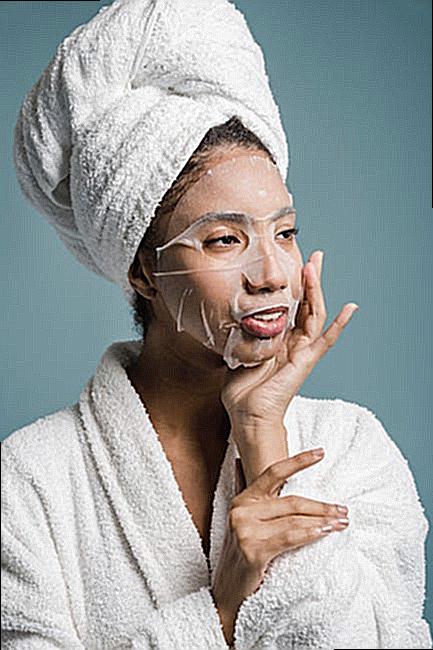Eye Care Kamloops is a premier eye care center located in the beautiful city of Kamloops in British Columbia, Canada. The clinic boasts a team of highly skilled and experienced optometrists who specialize in providing comprehensive eye care services to patients of all ages. With a commitment to excellence, the clinic is dedicated to providing personalized and exceptional care to each and every patient that walks through its doors.
At Eye Care Kamloops, patients can expect cutting-edge technology, state-of-the-art diagnostic tools and techniques, and a wide range of vision care services. The clinic offers a full range of services, including comprehensive eye exams, contact lens fittings, treatment of eye diseases and conditions, as well as prescription eyewear and frame options.
The team at Eye Care Kamloops understands how important vision is to overall health and quality of life, and their mission is to provide patients with the highest quality eye care possible. The clinic prides itself on taking the time to understand each patient’s needs and working collaboratively to develop a tailored treatment plan that best suits their individual needs and lifestyle.
Whether you are seeking routine eye care, treatment for an eye condition or disease, or simply looking for new glasses or contact lenses, Eye Care Kamloops is your go-to destination. With a dedication to excellence, a commitment to cutting-edge technology, and a passion for patient care, Eye Care Kamloops is truly the premier eye care center in the Kamloops area.
What Are The Symptoms Of Dry Eyes?
Dry eyes are a common problem that affects millions of people worldwide. The condition occurs when the eyes are unable to produce enough tears or the quality of the tears is poor. This can result in a range of uncomfortable symptoms that can be both painful and frustrating. The most common symptoms of dry eyes include:
1. Burning and stinging sensation in the eyes
2. Itching and redness
3. Sensitivity to light
4. Blurred vision
5. Difficulty wearing contact lenses
6. Excessive tearing
7. Eye fatigue or tiredness
If you are experiencing any of these symptoms, it is important to seek medical attention. Your eye doctor will be able to assess your condition and recommend the appropriate treatment.
What Is Astigmatism?
Astigmatism is a common eye condition that causes blurry vision. It occurs when the cornea, which is the outer surface of the eye, is not perfectly round. Instead, it is shaped like a football, causing the light that enters the eye to be distorted. This can result in a range of symptoms, including:
1. Blurred or distorted vision
2. Eye strain or fatigue
3. Headaches
4. Squinting
5. Difficulty seeing at night

Astigmatism can be corrected with eyeglasses, contact lenses, or refractive surgery. Your eye doctor will be able to assess your condition and recommend the appropriate treatment.
What Is Myopia?
Myopia, also known as nearsightedness, is a condition where objects close up appear clear, while objects in the distance appear blurry. It occurs when the eyeball is too long or the cornea is too curved, causing the light that enters the eye to focus in front of the retina instead of on it. This can result in a range of symptoms, including:
1. Blurred vision when looking at distant objects
2. Squinting
3. Headaches
4. Eyestrain or fatigue
5. Difficulty seeing while driving
6. Difficulty seeing the board in a classroom
Myopia can be corrected with eyeglasses, contact lenses, or refractive surgery. Your eye doctor will be able to assess your condition and recommend the appropriate treatment.
What Is Hyperopia?
Hyperopia, also known as farsightedness, is a condition where objects in the distance appear clear, while objects close up appear blurry. It occurs when the eyeball is too short or the cornea is too flat, causing the light that enters the eye to focus behind the retina instead of on it. This can result in a range of symptoms, including:
1. Blurred vision when looking at close-up objects
2. Eyestrain or fatigue
3. Headaches
4. Difficulty reading
5. Crossed or wandering eyes in children
Hyperopia can be corrected with eyeglasses, contact lenses, or refractive surgery. Your eye doctor will be able to assess your condition and recommend the appropriate treatment.
How Do I Know If I Need Glasses?
If you are experiencing blurry vision or any of the symptoms listed above, it is important to schedule an appointment with your eye doctor. He or she will be able to assess your condition and determine if you need glasses. Your eye doctor will perform a comprehensive eye exam, which may include:

1. Visual acuity test
2. Refraction test
3. Visual field test
4. Color vision test
5. Retinal exam
6. Glaucoma test
Based on the results of these tests, your eye doctor will be able to recommend the appropriate treatment, which may include eyeglasses, contact lenses, or refractive surgery.
What Is Glaucoma?
Glaucoma is a group of eye diseases that can cause damage to the optic nerve and lead to vision loss. It occurs when there is a buildup of pressure in the eye, which can damage the optic nerve over time. Glaucoma is often referred to as the “silent thief of sight” because it can cause irreversible damage before any symptoms are noticed.
Early detection and treatment are crucial for preventing vision loss from glaucoma. Your eye doctor will perform a comprehensive eye exam, which may include a tonometry test to measure the pressure in your eye, a visual field test to check for vision loss, and a retinal exam to assess the health of your optic nerve. Treatment for glaucoma may include prescription eye drops, laser therapy, or surgery.
How Often Should I Get An Eye Exam?
It is recommended that you get a comprehensive eye exam every one to two years, depending on your age, overall health, and the presence of any eye diseases or conditions. Children should have their eyes checked regularly starting at six months of age, and again at age three and before starting school.
People with a higher risk of eye diseases, such as those with diabetes, a family history of eye disease, or a history of eye injury, should have their eyes checked more frequently. Your eye doctor will be able to provide specific recommendations based on your individual needs.
What Is Age-Related Macular Degeneration?
Age-related macular degeneration (AMD) is a condition that affects the macula, which is the part of the eye responsible for central vision. It occurs when the macula deteriorates over time, causing vision loss in the center of your visual field. AMD is more common in people over the age of 50.
Symptoms of AMD include:
1. Blurred or distorted vision
2. Difficulty reading or performing tasks that require fine detail
3. Reduced color perception
4. Dark or empty areas in the center of your visual field
There is no cure for AMD, but early detection and treatment can slow the progression of the disease and prevent further vision loss. Treatment may include injections of medication into the eye, laser therapy, or photodynamic therapy.
What Are Cataracts And How Are They Treated?
Cataracts are a common condition that affects millions of people worldwide. They occur when the lens of the eye becomes cloudy, causing vision to become blurry or hazy. Cataracts can develop slowly over time and may not cause any noticeable symptoms at first. As they progress, however, they can cause a range of symptoms, including:
1. Blurry or hazy vision
2. Difficulty seeing in bright light
3. Glare or halos around lights
4. Colors appearing faded or yellowed
5. Double vision in one eye
Cataracts can be treated with surgery to remove the cloudy lens and replace it with an artificial lens. The surgery is typically performed on an outpatient basis and can be done with local anesthesia.
How Can I Protect My Eyes From Uv Rays?
UV rays from the sun can cause damage to the eyes, leading to conditions such as cataracts and macular degeneration. To protect your eyes from UV rays, it is important to take the following steps:

1. Wear sunglasses that block 100% of UV rays
2. Wear a wide-brimmed hat or cap for extra protection
3. Avoid direct sunlight during peak hours (10 am to 4 pm)
4. Use UV-blocking contact lenses if necessary
What Is Presbyopia?
Presbyopia is a common condition that affects people as they age. It occurs when the lens of the eye becomes less flexible, making it harder to focus on close-up objects. Symptoms of presbyopia include:
1. Blurry vision when reading or looking at close-up objects
2. Difficulty focusing in low light
3. Eye strain or fatigue
Presbyopia can be corrected with reading glasses, progressive lenses, or multifocal contact lenses. Your eye doctor will be able to recommend the best treatment for your individual needs.
What Causes Red Eyes And How Can It Be Treated?
Red eyes can be caused by a range of factors, including allergies, infections, and dryness. Treatment depends on the underlying cause and may include:
1. Over-the-counter eye drops to relieve dryness or redness
2. Prescription eyedrops for infections or allergies
3. Warm compresses to relieve inflammation
4. Avoiding allergens or irritants that may be causing the redness
If your red eyes persist or are accompanied by other symptoms, it is important to seek medical attention.
What Is Colour Blindness?
Colour blindness is a condition where a person has difficulty distinguishing between different colors. It occurs when the photoreceptor cells in the retina that are responsible for color vision are not functioning properly. There are three main types of color blindness:
1. Red-green color blindness, which is the most common type and affects the ability to distinguish between red and green
2. Blue-yellow color blindness, which affects the ability to distinguish between blue and yellow
3. Total color blindness, which is rare and affects the ability to see any colors at all
While there is no cure for color blindness, there are tools and techniques available to help people compensate for the condition, such as color-filtering lenses and specialized software.
Conclusion
In conclusion, Eye Care Kamloops is an exceptional optometric clinic that offers a wide range of eye care services. Their well-trained staff is dedicated to providing individualized care, ensuring that each patient receives the highest quality of treatment. The clinic is equipped with advanced technology and state-of-the-art equipment, allowing for accurate diagnoses and efficient treatment.
One of the many benefits of Eye Care Kamloops is their commitment to education. They believe that educating their patients about proper eye care is an essential component of maintaining healthy eyes. As a result, they provide comprehensive resources to help patients understand their diagnosis, treatment options, and preventative measures.
Furthermore, Eye Care Kamloops is deeply invested in the local community. They sponsor various community events and offer charitable contributions to local organizations. This demonstrates their commitment to improving the overall health and well-being of the community they serve.
Overall, Eye Care Kamloops is a reliable and trustworthy optometric clinic that has made significant contributions to the local community. Their commitment to education and patient care, combined with their state-of-the-art technology and equipment, make them an outstanding choice for anyone seeking quality eye care services in Kamloops.
Dry eyes are a common problem that affects millions of people worldwide. The condition occurs when the eyes are unable to produce enough tears or the quality of the tears is poor. This can result in a range of uncomfortable symptoms that can be both painful and frustrating. The most common symptoms of dry eyes include:
1. Burning and stinging sensation in the eyes 2. Itching and redness 3. Sensitivity to light 4. Blurred vision 5. Difficulty wearing contact lenses 6. Excessive tearing 7. Eye fatigue or tiredness
If you are experiencing any of these symptoms, it is important to seek medical attention. Your eye doctor will be able to assess your condition and recommend the appropriate treatment.
"}},{"@type": "Question", "name": "What Is Astigmatism?","acceptedAnswer": {"@type": "Answer","text": "Astigmatism is a common eye condition that causes blurry vision. It occurs when the cornea, which is the outer surface of the eye, is not perfectly round. Instead, it is shaped like a football, causing the light that enters the eye to be distorted. This can result in a range of symptoms, including:
1. Blurred or distorted vision 2. Eye strain or fatigue 3. Headaches 4. Squinting 5. Difficulty seeing at night
Astigmatism can be corrected with eyeglasses, contact lenses, or refractive surgery. Your eye doctor will be able to assess your condition and recommend the appropriate treatment.
"}},{"@type": "Question", "name": "What Is Myopia?","acceptedAnswer": {"@type": "Answer","text": "Myopia, also known as nearsightedness, is a condition where objects close up appear clear, while objects in the distance appear blurry. It occurs when the eyeball is too long or the cornea is too curved, causing the light that enters the eye to focus in front of the retina instead of on it. This can result in a range of symptoms, including:
1. Blurred vision when looking at distant objects 2. Squinting 3. Headaches 4. Eyestrain or fatigue 5. Difficulty seeing while driving 6. Difficulty seeing the board in a classroom
Myopia can be corrected with eyeglasses, contact lenses, or refractive surgery. Your eye doctor will be able to assess your condition and recommend the appropriate treatment.
"}},{"@type": "Question", "name": "What Is Hyperopia?","acceptedAnswer": {"@type": "Answer","text": "Hyperopia, also known as farsightedness, is a condition where objects in the distance appear clear, while objects close up appear blurry. It occurs when the eyeball is too short or the cornea is too flat, causing the light that enters the eye to focus behind the retina instead of on it. This can result in a range of symptoms, including:
1. Blurred vision when looking at close-up objects 2. Eyestrain or fatigue 3. Headaches 4. Difficulty reading 5. Crossed or wandering eyes in children
Hyperopia can be corrected with eyeglasses, contact lenses, or refractive surgery. Your eye doctor will be able to assess your condition and recommend the appropriate treatment.
"}},{"@type": "Question", "name": "How Do I Know If I Need Glasses?","acceptedAnswer": {"@type": "Answer","text": "If you are experiencing blurry vision or any of the symptoms listed above, it is important to schedule an appointment with your eye doctor. He or she will be able to assess your condition and determine if you need glasses. Your eye doctor will perform a comprehensive eye exam, which may include:
1. Visual acuity test 2. Refraction test 3. Visual field test 4. Color vision test 5. Retinal exam 6. Glaucoma test
Based on the results of these tests, your eye doctor will be able to recommend the appropriate treatment, which may include eyeglasses, contact lenses, or refractive surgery.
"}},{"@type": "Question", "name": "What Is Glaucoma?","acceptedAnswer": {"@type": "Answer","text": "Glaucoma is a group of eye diseases that can cause damage to the optic nerve and lead to vision loss. It occurs when there is a buildup of pressure in the eye, which can damage the optic nerve over time. Glaucoma is often referred to as the “silent thief of sight” because it can cause irreversible damage before any symptoms are noticed.
Early detection and treatment are crucial for preventing vision loss from glaucoma. Your eye doctor will perform a comprehensive eye exam, which may include a tonometry test to measure the pressure in your eye, a visual field test to check for vision loss, and a retinal exam to assess the health of your optic nerve. Treatment for glaucoma may include prescription eye drops, laser therapy, or surgery.
"}},{"@type": "Question", "name": "How Often Should I Get An Eye Exam?","acceptedAnswer": {"@type": "Answer","text": "It is recommended that you get a comprehensive eye exam every one to two years, depending on your age, overall health, and the presence of any eye diseases or conditions. Children should have their eyes checked regularly starting at six months of age, and again at age three and before starting school.
People with a higher risk of eye diseases, such as those with diabetes, a family history of eye disease, or a history of eye injury, should have their eyes checked more frequently. Your eye doctor will be able to provide specific recommendations based on your individual needs.
"}},{"@type": "Question", "name": "What Is Age-Related Macular Degeneration?","acceptedAnswer": {"@type": "Answer","text": "Age-related macular degeneration (AMD) is a condition that affects the macula, which is the part of the eye responsible for central vision. It occurs when the macula deteriorates over time, causing vision loss in the center of your visual field. AMD is more common in people over the age of 50.
Symptoms of AMD include:
1. Blurred or distorted vision 2. Difficulty reading or performing tasks that require fine detail 3. Reduced color perception 4. Dark or empty areas in the center of your visual field
There is no cure for AMD, but early detection and treatment can slow the progression of the disease and prevent further vision loss. Treatment may include injections of medication into the eye, laser therapy, or photodynamic therapy.
"}},{"@type": "Question", "name": "What Are Cataracts And How Are They Treated?","acceptedAnswer": {"@type": "Answer","text": "Cataracts are a common condition that affects millions of people worldwide. They occur when the lens of the eye becomes cloudy, causing vision to become blurry or hazy. Cataracts can develop slowly over time and may not cause any noticeable symptoms at first. As they progress, however, they can cause a range of symptoms, including:
1. Blurry or hazy vision 2. Difficulty seeing in bright light 3. Glare or halos around lights 4. Colors appearing faded or yellowed 5. Double vision in one eye
Cataracts can be treated with surgery to remove the cloudy lens and replace it with an artificial lens. The surgery is typically performed on an outpatient basis and can be done with local anesthesia.
"}},{"@type": "Question", "name": "How Can I Protect My Eyes From Uv Rays?","acceptedAnswer": {"@type": "Answer","text": "UV rays from the sun can cause damage to the eyes, leading to conditions such as cataracts and macular degeneration. To protect your eyes from UV rays, it is important to take the following steps:
1. Wear sunglasses that block 100% of UV rays 2. Wear a wide-brimmed hat or cap for extra protection 3. Avoid direct sunlight during peak hours (10 am to 4 pm) 4. Use UV-blocking contact lenses if necessary
"}},{"@type": "Question", "name": "What Is Presbyopia?","acceptedAnswer": {"@type": "Answer","text": "Presbyopia is a common condition that affects people as they age. It occurs when the lens of the eye becomes less flexible, making it harder to focus on close-up objects. Symptoms of presbyopia include:
1. Blurry vision when reading or looking at close-up objects 2. Difficulty focusing in low light 3. Eye strain or fatigue
Presbyopia can be corrected with reading glasses, progressive lenses, or multifocal contact lenses. Your eye doctor will be able to recommend the best treatment for your individual needs.
"}},{"@type": "Question", "name": "What Causes Red Eyes And How Can It Be Treated?","acceptedAnswer": {"@type": "Answer","text": "Red eyes can be caused by a range of factors, including allergies, infections, and dryness. Treatment depends on the underlying cause and may include:
1. Over-the-counter eye drops to relieve dryness or redness 2. Prescription eyedrops for infections or allergies 3. Warm compresses to relieve inflammation 4. Avoiding allergens or irritants that may be causing the redness
If your red eyes persist or are accompanied by other symptoms, it is important to seek medical attention.
"}},{"@type": "Question", "name": "What Is Colour Blindness?","acceptedAnswer": {"@type": "Answer","text": "Colour blindness is a condition where a person has difficulty distinguishing between different colors. It occurs when the photoreceptor cells in the retina that are responsible for color vision are not functioning properly. There are three main types of color blindness:
1. Red-green color blindness, which is the most common type and affects the ability to distinguish between red and green 2. Blue-yellow color blindness, which affects the ability to distinguish between blue and yellow 3. Total color blindness, which is rare and affects the ability to see any colors at all
While there is no cure for color blindness, there are tools and techniques available to help people compensate for the condition, such as color-filtering lenses and specialized software.
"}},{"@type": "Question", "name": "Conclusion","acceptedAnswer": {"@type": "Answer","text": "In conclusion, Eye Care Kamloops is an exceptional optometric clinic that offers a wide range of eye care services. Their well-trained staff is dedicated to providing individualized care, ensuring that each patient receives the highest quality of treatment. The clinic is equipped with advanced technology and state-of-the-art equipment, allowing for accurate diagnoses and efficient treatment.
One of the many benefits of Eye Care Kamloops is their commitment to education. They believe that educating their patients about proper eye care is an essential component of maintaining healthy eyes. As a result, they provide comprehensive resources to help patients understand their diagnosis, treatment options, and preventative measures.
Furthermore, Eye Care Kamloops is deeply invested in the local community. They sponsor various community events and offer charitable contributions to local organizations. This demonstrates their commitment to improving the overall health and well-being of the community they serve.
Overall, Eye Care Kamloops is a reliable and trustworthy optometric clinic that has made significant contributions to the local community. Their commitment to education and patient care, combined with their state-of-the-art technology and equipment, make them an outstanding choice for anyone seeking quality eye care services in Kamloops. "}}]}



